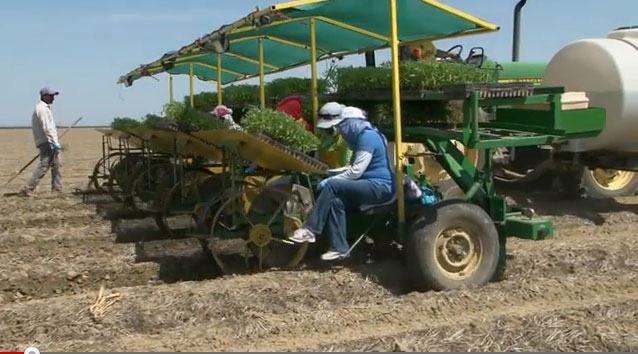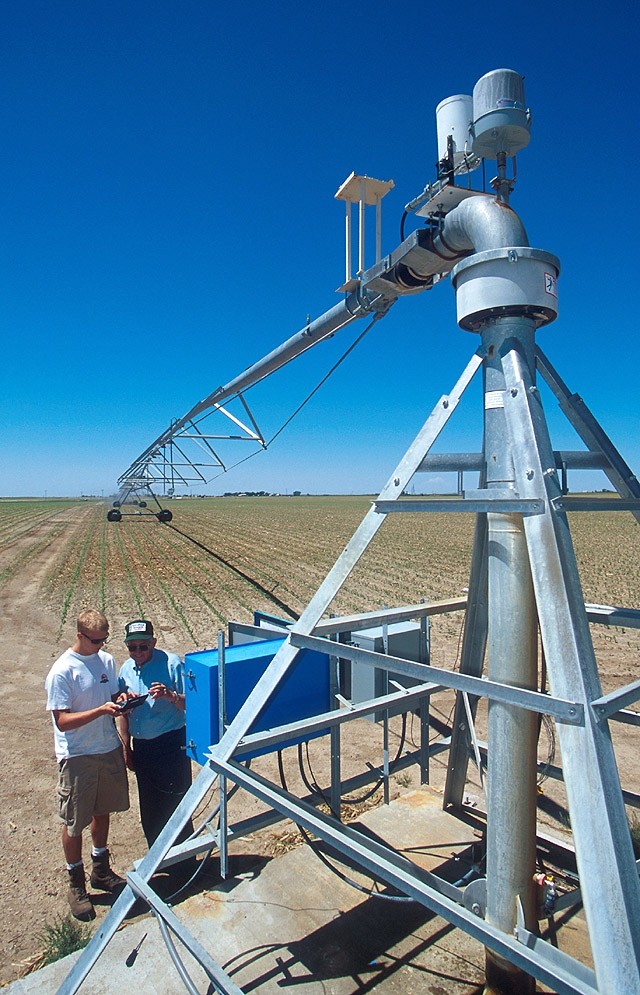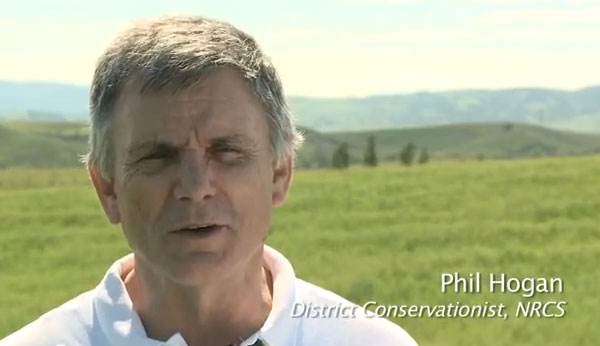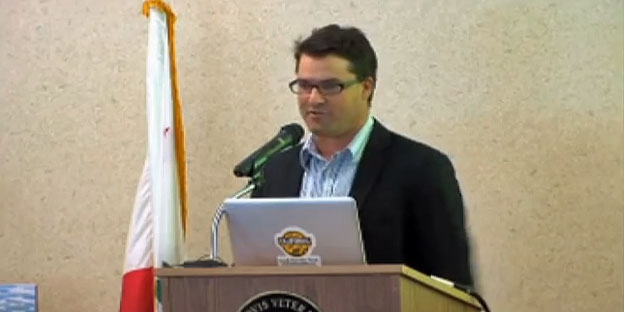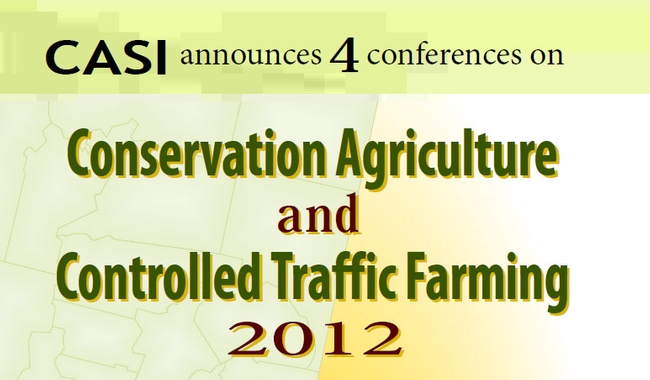Conservation agriculture news
Processing tomatoes and conservation agriculture featured in Part 3 of documentary series
The history of California processing tomato production is an impressive success story. Over the past 90 years, the tomato industry has boosted per-acre production by 740 percent. The state accounts for more than 95 percent of U.S. processing tomatoes.
Research by UC Cooperative Extension has shown there are even more production improvements to be realized with the incorporation of conservation agricultural systems in processing tomato production. Using conservation agriculture in processing tomatoes is the focus of the third installment of the Conservation Agriculture Systems Documentary, available on the program's website today at http://CASI.ucanr.edu. (The video is also posted below.)
Using conservation agricultural systems, tomato growers stand to cut production costs by $70 to $140 per acre, reduce fuel use and dust emissions and increase soil carbon by growing winter cover crops.
In the video, Jeff Mitchell, UC Cooperative Extension specialist in the Department of Plant Sciences at UC Davis, shows a research trial where no-till tomatoes grown in cover-crop residue is demonstrated side-by-side with no-till tomatoes in a field where a winter cover crop was not grown.
Mitchell will be available to answer specific questions about conservation agriculture at the annual Twilight Conservation Agriculture field day to be held at 4 p.m. Sept. 13 at the UC West Side Research and Extension Center, 17353 W. Oakland Ave. in Five Points. To register, go to: http://ucanr.edu/TwilightRegistration. For more information about the field day, see the field day announcement.
Video three is posted below:
To view segments one and two of the Conservation Agriculture documentary series, go to the table of contents.
UC's first center pivot irrigation system to be dedicated Sept. 13
In a clear sign of changing times in California agriculture, the University of California dedicates its first full-sized center pivot overhead irrigation system at the UC West Side Research and Extension Center during the Twilight Conservation Agriculture field day at 4 p.m. Sept. 13. The center is at 17353 W. Oakland Ave., Five Points.
Farmers and other members of the public are invited to the free event to see the system in operation and learn how overhead irrigation can be combined with no-till or minimum-till farming methods to create a more sustainable, profitable and environmentally sound agriculture industry. The field day includes a free barbecue dinner. To register, go to: http://ucanr.edu/TwilightRegistration.
Overhead irrigation systems, such as center pivot systems, are the most prevalent form of irrigation nationwide; however, they have not been widely adopted in California to date. Recent technological advances in overhead irrigation – which allows integration of irrigation with global positioning systems (GPS) and management of vast acreage from a computer or smart phone – have boosted farmers’ interest in converting from gravity-fed surface irrigation systems, which are still used on 5 million acres of California farmland.
“We see tremendous possibilities for overhead irrigation in cotton, alfalfa, corn, onions and wheat production,” said Jeff Mitchell, UC Cooperative Extension specialist in the Department of Plant Sciences at UC Davis. “There is also great potential for overhead irrigation in California’s $5 billion dairy industry for more efficiently producing feed crops like alfalfa, corn and sorghum.”
Use of the new system at the West Side Research and Extension Center, valued at about $100,000, was donated by Reinke Manufacturing of Hastings, Neb. Reinke will also sponsor the installation of its OnTrac irrigation monitoring system, which will give farmers and the public a real-time, online window of observation on crops growing and being irrigated by the new center pivot.
To begin with, the center pivot will irrigate an 8-acre half-circle of alfalfa and an 8-acre half-circle of cotton. All aspects of production – including irrigation system performance, weed control, fertilization, soil salinity and economic viability – will be monitored by a diverse team of researchers from UC Cooperative Extension, Fresno State University and UC Davis, plus farmer cooperators and industry members.
“In cotton and alfalfa, we will study deficit irrigation,” Mitchell said. “By controlling the speed of the pivot, pie-shaped segments will get either full irrigation, three-quarters of the full amount or about half of the full irrigation quantity.”
At the Sept. 13 field day, researchers will share what they have already learned about using center pivot systems in California. Participants will hear how overhead irrigation systems operate, how they are optimally managed, how soil water sensors can be used in conjunction with overhead systems and how overhead systems can result in higher application efficiencies and uniformities.
For more information, contact Jeff Mitchell, jpmitchell@ucdavis.edu, (559) 303-9689.
The second installment of CASI's Conservation Agriculture documentary released
Episode 2 of CASI's six-part documentary series, "The Value of Residues in Conservation Agriculture Systems," has been released on the CASI webpage, http://CASI.ucanr.edu. (The video has also been posted below.)
In the 8-minute video, viewers will be introduced to a new way of looking at plant residues. In California, many farmers manage crop residues to make them essentially "disappear," due to concerns about pathogens and in order to make clean planting beds.
"The crop residues used to be viewed as trash," says Phil Hogan, district conservationist with the U.S. Natural Resources Conservation Service, in the video. "It's not trash, its a resource to be used which helps increase soil organic matter, which helps increase soil moisture."
The next segment in the documentary series, to be released Aug. 20, looks at conservation agriculture in tomato production systems, which cut production costs, reduce dust emissions and store more carbon in the soil.
Participants in the field day will see the latest 21st Century center pivot and linear systems being adapted for California’s complex dairy waste disposal and silage production systems and the latest low-pressure precision emitters, which allow farmers to ‘spoon feed’ their crops.
View all the videos that have been released to date and the titles of upcoming installments here: http://ucanr.edu/documentary
CASI launch meeting videos now available online
The presentations provide information about the evolution of CASI, its recent research and development work on conservation agriculture systems and its new capacity-building initiatives to increase the adoption of competitive and sustainable production systems in California’s Central Valley.
The videos can be viewed using a computer, smart phone, iPad or other tablet. The following presentations are available:
Introduction to Conservation Agriculture Cropping Systems 12:51
Jeff Mitchell, UC Cooperative Extension specialist in the Department of Plant Sciences, UC Davis
The History of CASI: Conservation Agricultural Systems Innovation 18:00
Ron Harben, California Association of Resource Conservation Districts
CASI's Merge with the Conservation Tillage Workgroup 21:19
Dan Munk, UC Cooperative Extension advisor in Fresno County
History of California's Center Pivot Industry and CASI's 21st Century Goals 6:58
Harold Hughes, Overhead irrigation specialist with Reinke Mfg. (retired)
KEYNOTE: Adapting to Change: Agriculture in the 21st Century 38:32
Dino Giacomazzi, dairyman/farmer, Hanford, Calif.
Sprinklers and Applications on Pivots 12:35
Dan Schueler, Southwest District Manager, Senninger Irrigation Inc., Clovis, Calif.
California's Historic 40-year Stalemate of its 5 million acres of gravity irrigation systems 8:55
Jerry E. Rossiter, President/CEO CISCO Ag, Atwater, Calif.
World conservation agriculture leaders come to California for controlled traffic conferences
Speakers from around the world will share their expertise with California farmers during a series of four conferences Aug. 28 to 30. The conference schedule is as follows:
| Aug. 28, | 1-4 p.m. | UC Davis Heidrick Ag Equipment Center 113 / Hutchinson, UC Davis (530) 752-1898
|
| Aug. 29, | 8-11 a.m. | UCCE Stanislaus County 3800 Cornucopia Way, Suite A Modesto, CA (209) 525-6800
|
| Aug. 29, | 1-4 p.m. | UC Westside Field Station 17353 W. Oakland Five Points, CA
|
| Aug. 30, | 8-11 a.m. | UCCE Kern County 1031 S. Mount Vernon Bakersfield, CA |
Presenters at all four conferences are:
Jerry Hatfield
Director of the USDA-ARS National Soil Tilth Lab
Ames, Iowa
Dr. Hatfield's research emphasis is on the interactions among the components of the soil-plant-atmosphere continuum and their linkage to air, water and soil quality. He has broad experience with evaluation of farming practices on water quality, water use efficiency and climate impacts on agriculture.
Don Reicosky
USDA-ARS (retired)
Morris, Minnesota
Don Reicosky has been called "a giant in the carbon fields" for his "ground-breaking work" on tillage-induced carbon dioxide loss, carbon sequestration and soil quality and environmental conservation.
Clay Mitchell
Farmer
Geneseo, Iowa
A Harvard-educated engineer, Mitchell is widely recognized as "a farmer of the future" who has combined numerous technologies and innovations to greatly increase the efficiencies of his farm operations
Rolf Derpsch
No-till expert
Paraguay
One of the first people to research no-tillage technologies in Brazil and Latin America in 1971, Derpsch is a world leader in conservation tillage, on-farm research and technology development and sustainable productivity systems with permanent soil cover.
John McPhee
Tasmanian Institute of Agriculture
Burnie, Tasmania
John McPhee is a research pioneer with zero-till and controlled traffic farming for intensive horticultural crops.
For more information, contact Jeff Mitchell at jpmitchell@ucdavis.edu, (559) 303-9689. Also see the pdf flyer attached below:
Aug 2012 Meeting Series

